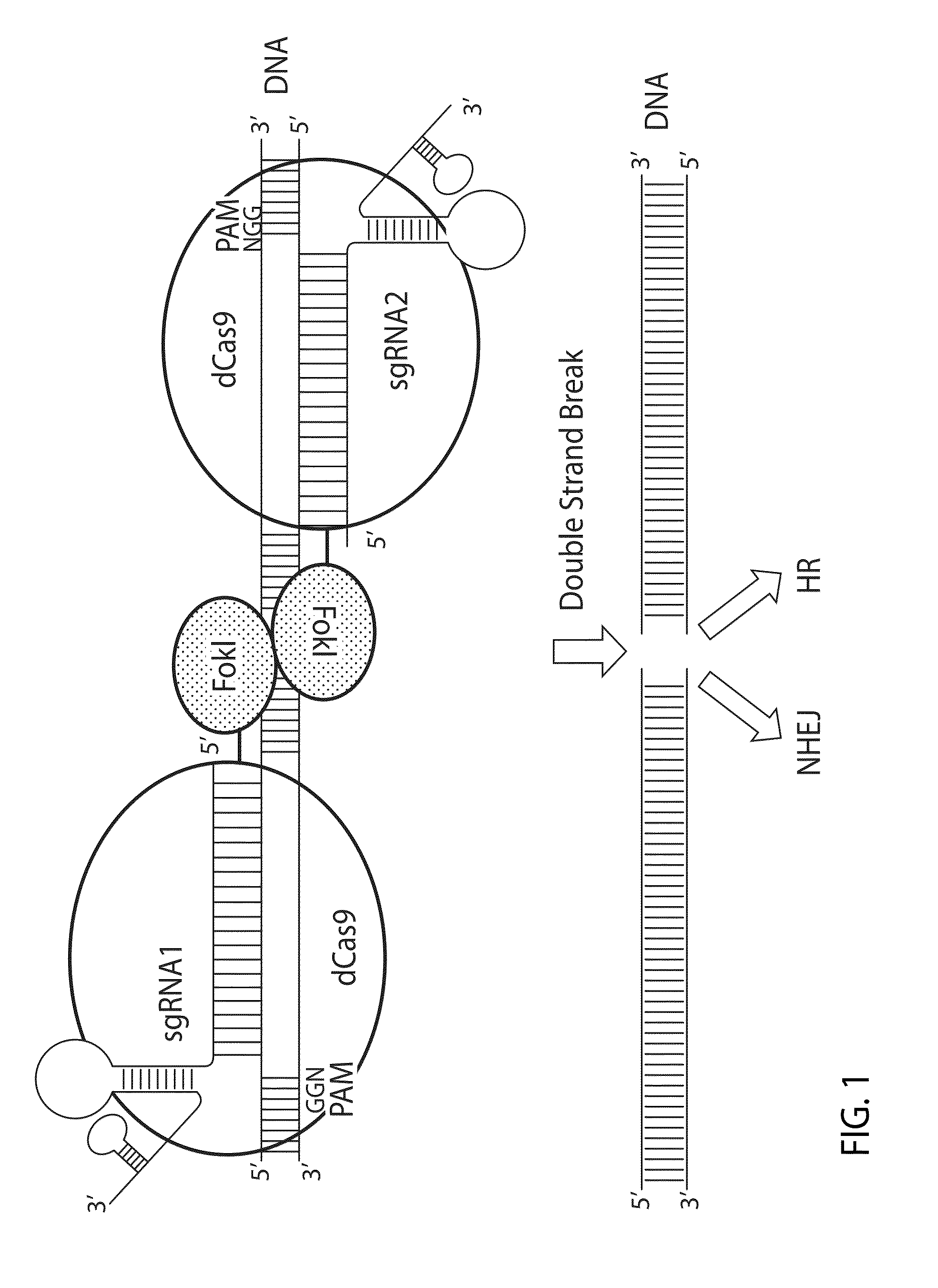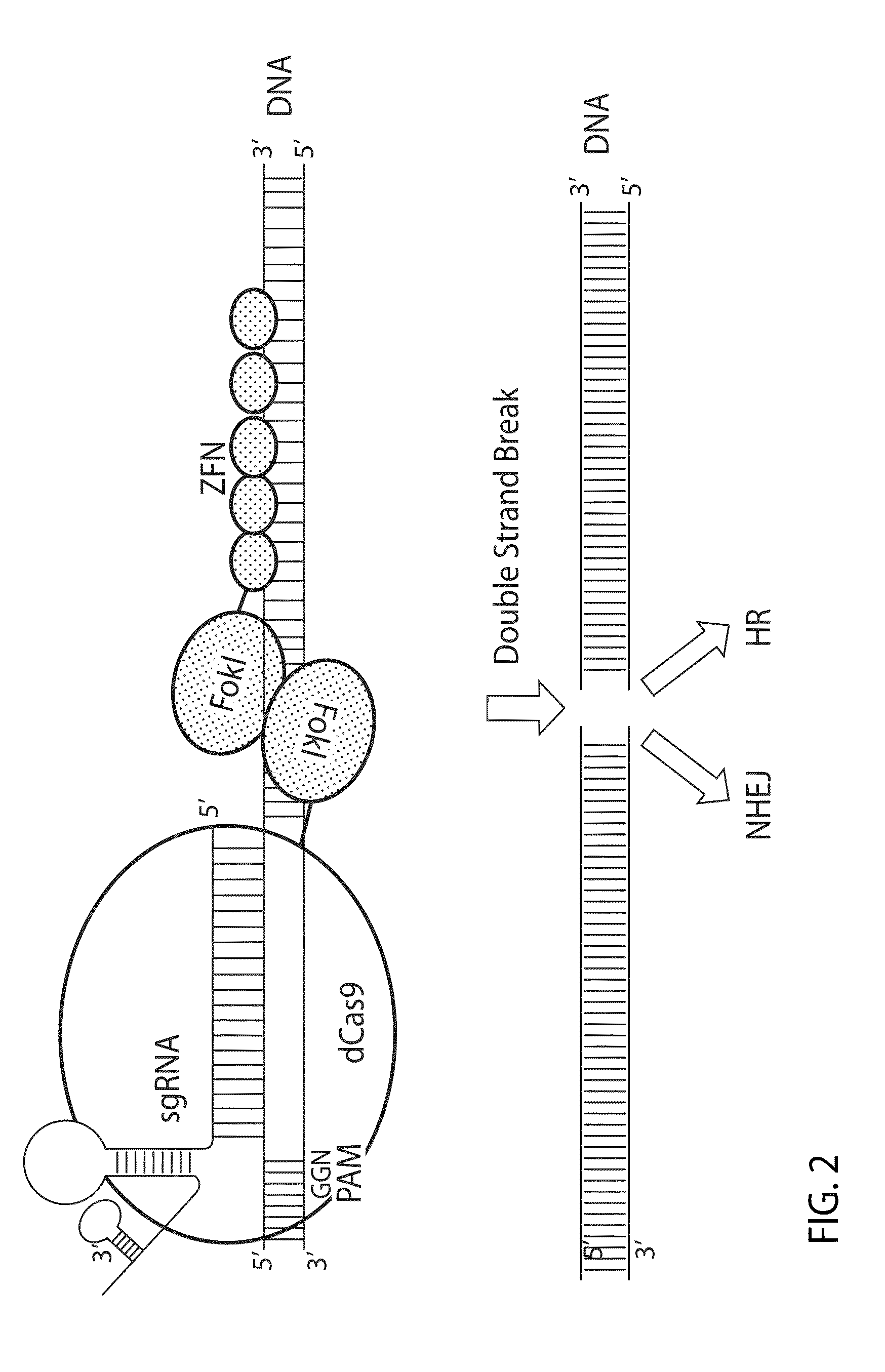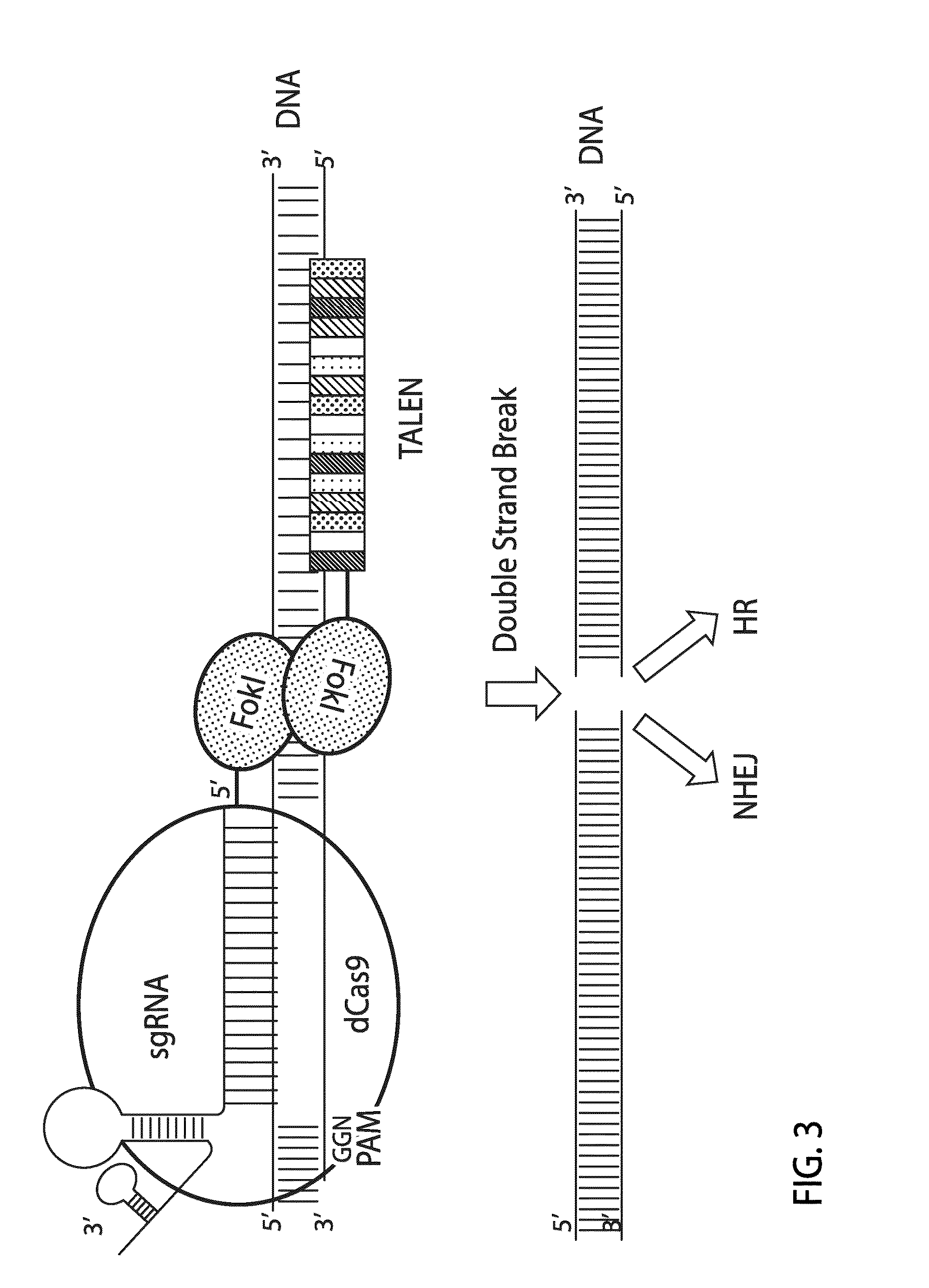Crispr/cas system-based novel fusion protein and its applications in genome editing
a genome editing and novel fusion protein technology, applied in the field of chimeric fusion proteins, can solve the problems of time-consuming and laborious systems, difficult construction of specific zfns and talens, and high-affinity zfns and talens
- Summary
- Abstract
- Description
- Claims
- Application Information
AI Technical Summary
Benefits of technology
Problems solved by technology
Method used
Image
Examples
example 1
Engineering FokI-dCas9 Fusion Protein Encoding DNA Constructs
[0132]In this Example, a chimeric fusion protein having a FokI nuclease domain fused to catalytically inactive Cas9 domain (dCas9) is described.
[0133]First, the DNA fragment encoding the wild type Streptococcus pyogenes Cas9 protein with a NLS at the C-terminus (SEQ ID NO: 31) was generated based on published codon optimized Cas9 sequence (Mali P, et al, Science. 2013 Feb. 15; 339 (6121):823-6) by assembling synthetic DNA fragments (gBlocks from IDT Integrated DNA Technologies) using standard PCR, restriction enzyme digestion and ligation methods. The DNA fragment was cloned into either pcDNA3.1 plasmids (Lifetechnologies) or a mouse Rosa ZFN plasmid, pVAX-ZFN73 (SAGE Labs) at the KpnI and XbaI sites to obtain pcDNA3.1 / Cas9 and pVAX / 3xFlag-Cas9 plasmids (FIG. 4). Both of these plasmids contain CMV and T7 promoters upstream of the Cas9 coding DNA and a polyadenylation signal sequence downstream of the Cas9 coding DNA. The C...
example 2
FokI-dCas9 System-Mediated Genome Mutations in Mouse Rosa26 Locus
[0139]In this example, the applications of a FokI-dCas9 fusion protein to induce genome mutations in cultured mouse cells are described.
[0140]Rosa26 has been widely used as a model for inserting foreign DNA. This example uses a partial mouse Rosa26 sequence (Chr6: 113,075,754-113,076,639) (SEQ ID NO: 37) to demonstrate how the FokI-dCas9 system induces DSBs in a gene and creates mutations by the error-prone nonhomologous end joining (NHEJ) mechanism. This example also demonstrates how the spacer lengths between two sgRNA target sites and the orientation of a paired sgRNA affect the fusion protein mediated mutations.
[0141]Partial mouse Rosa26 genomic DNA sequence (886 bp) was selected from the C57BL / 6 mouse genome (Chr 6:113,075,754-113,076,639) for testing FokI-dCas9 fusion protein-mediated gene editing. Specifically, the following steps were performed: (1) Engineering a FokI-dCas9 and a dCas9-FokI fusion proteins as d...
example 3
FokI-dCas9 System-Mediated Human Genome Modification
[0162]In this example, FokI-dCas9 fusion protein-mediated genome mutations in human EMX1 locus in cultured human cells is described.
[0163]Specifically, a partial sequence (Chr 2: 73160831-73161367; SEQ ID NO: 38) of human gene EMX1 was selected for testing paired sgRNA guided FokI-dCas9 activity in HEK293 cells. Thirteen sgRNAs targeting human EMX1 gene were designed and made using the method described in Example 2. Among these EMX1 sgRNAs, the target sequences of sgRNAs 1, 9, 20 and 22 were based on previous publications (Ran F A, et al. Cell. 2013 Sep. 12; 154(6):1380-9), and sgRNA15S and 17S were modified from the same paper by using an 18 bp target sequence. These sgRNA target sites are listed in Table 3.
TABLE 3Human EMX1 sgRNA target sitessgRNA IDProtospacer SequencePAMStrand 4CGCCCATCTTCTAGAAAGACTGG− 7GGCTCAGCACGCCCCTCTTGAGG− 8GCAGTAGGGCTGAGCGGCTGCGG+ 9CCTCTTGAGGCAACTCAAGTCGG−11GGCAGGCTTAAAGGCTAACCTGG+13GGGAGTTCTCTGCTGCCTCCTG...
PUM
| Property | Measurement | Unit |
|---|---|---|
| Length | aaaaa | aaaaa |
Abstract
Description
Claims
Application Information
 Login to View More
Login to View More - R&D
- Intellectual Property
- Life Sciences
- Materials
- Tech Scout
- Unparalleled Data Quality
- Higher Quality Content
- 60% Fewer Hallucinations
Browse by: Latest US Patents, China's latest patents, Technical Efficacy Thesaurus, Application Domain, Technology Topic, Popular Technical Reports.
© 2025 PatSnap. All rights reserved.Legal|Privacy policy|Modern Slavery Act Transparency Statement|Sitemap|About US| Contact US: help@patsnap.com



